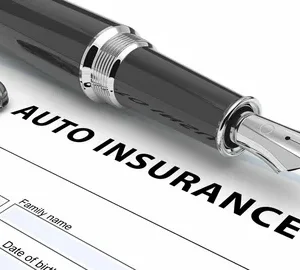🔥 Collision vs. Comprehensive Insurance for Luxury Cars: What Every High-End Car Owner Must Know
Owning a luxury vehicle isn’t just about the thrill of the drive—it’s an investment in craftsmanship, performance, and exclusivity. Yet when it comes to protecting such an asset, standard insurance policies often fall short. High-end cars command higher repair bills, rare parts, and specialized labor; choosing the right coverage is critical to avoid out-of-pocket costs that can quickly soar into the tens of thousands. In this deep-dive guide, we’ll explore:
- What collision insurance covers
- What comprehensive insurance covers
- Key differences (with a comparison table)
- Why these distinctions matter for luxury vehicles
- Cost factors unique to high-end cars
- Real-world data and user insights
- Tips for selecting the optimal mix of coverage
Our goal is to make this complex topic approachable—so whether you’re cruising a Mercedes-Benz S-Class or piloting a Bentley Continental GT, you’ll feel confident that you’ve picked the perfect policy.
What Is Collision Insurance?
Collision insurance helps pay for repairs to your vehicle after an accident, regardless of who is at fault. It typically covers:
- Accidents with other vehicles: Colliding with another car, truck, or motorcycle.
- Single-vehicle incidents: Crashing into a stationary object (e.g., a pole, guardrail, or fence).
- “At-fault” collisions: If you cause the crash, collision insurance steps in where liability coverage does not.
“Collision coverage helps repair your car from traffic accident damages”—a critical safeguard when repair bills for luxury vehicles can exceed $10,000 per panel replacement or advanced driver-assist system recalibration (investopedia.com).
Why luxury cars need it: High-performance brakes, sensors, and aluminum or carbon-fiber body panels drive up repair costs by 50–100% compared to standard vehicles (wsj.com).
What Is Comprehensive Insurance?
Comprehensive insurance protects against non-collision events that can still inflict serious damage on a luxury car:
- Theft and vandalism: High-end models are prime targets for thieves.
- Natural disasters: Floods, hailstorms, falling tree limbs, and fires.
- Animal collisions: Striking a deer or other wildlife.
- Glass breakage: Windshield cracks or shattered panoramic roofs.
“Comprehensive insurance pays for losses from non-collision incidents like fires or theft”.
Why luxury cars need it: Exotic paint finishes, custom upholstery, and high-end electronics mean minor hail damage or a broken window can cost thousands to fix—often more than collision repairs on economy models (nerdwallet.com).
Key Differences at a Glance
| Feature | Collision Insurance | Comprehensive Insurance |
|---|---|---|
| What it covers | Accidents with vehicles/objects; “at-fault” crashes | Theft, vandalism, weather damage, animal strikes, glass breakage |
| Deductible impact | Choose per-claim deductible; higher ⇒ lower premium | Often grouped with collision deductible for consistency |
| Typical cost relative | Generally 20–30% more expensive than comprehensive for same vehicle (weshopinsurance.com) | Often 10–15% cheaper but may vary based on region & risk factors (progressive.com) |
| Claims frequency | Higher (accidents are common) | Lower (non-collision perils are less frequent) |
| Ideal for | Drivers with high accident risk or financing requirements | Owners seeking protection against all perils beyond collisions |
Why the Distinctions Matter for Luxury Cars
- Repair Costs Multiply Quickly
- A single collision repair on a standard sedan averages $2,000–$3,500; on a luxury car, that can top $8,000 due to specialized parts and labor (wsj.com).
- Non-collision damage—like hail dents on a carbon-fiber hood—often necessitates full-panel replacement rather than dent-pulling, leading to bills upward of $5,000 .
- Financing and Lease Requirements
- Lenders and leasing companies frequently mandate both collision and comprehensive coverage to protect their collateral.
- Failing to maintain “full coverage” can trigger forced insurance purchases at higher rates, plus mortgage or lease penalties.
- Depreciation and Total Loss Calculations
- Luxury cars depreciate at different rates—sometimes slower than economy models—influencing total-loss payouts. Comprehensive coverage ensures you receive fair actual cash value, rather than “book” values that may understate worth.
Factors Affecting Insurance Costs for High-End Vehicles
Several variables determine premium rates for collision and comprehensive coverage on luxury cars:
- Vehicle Make & Model: Exotic brands (e.g., Lamborghini, Aston Martin) often carry 25–40% higher premiums than premium-luxury marques due to rarer parts and fewer authorized repair shops (progressive.com).
- Driving History: Even one at-fault accident can spike collision premiums by 20–50%, with DUI convictions causing full-coverage rates to jump as much as 87% (nerdwallet.com).
- Location & Garage Security: High-theft zip codes or street parking can elevate comprehensive costs by 15–30%. Gated communities or covered garages may qualify owners for substantial discounts.
- Deductible Level: Choosing a higher deductible (e.g., $2,500 vs. $500) can cut collision and comprehensive premiums by 20–40%, but owners must budget for larger out-of-pocket expenses when filing claims.
- Annual Mileage: Low-mileage drivers (<7,500 miles/year) often secure 10–20% discounts, since less time on the road reduces both collision and comprehensive claim likelihood.
Real-World Data & Owner Insights
Average Annual Cost: According to Forbes Advisor, the national average for full coverage on a luxury vehicle is $4,094 per year, compared to $2,680 for standard full coverage policies (forbes.com).
Exotic Car Example: Insuring a 2021 Lamborghini Aventador can range from $5,000 to $20,000 annually, depending on deductible levels and driver profile (griffitheharris.com).
Owner Review Highlights:
- “I opted for a $1,000 deductible on collision—and it saved me about $1,200/year on premiums—but it meant a $2,300 repair bill after a minor fender bender.”
- “Comprehensive coverage paid for a full-hood repaint after hail damage; without it, I was looking at $6,500 out of pocket.”
- “Bundling with homeowners and using telematics shaved 12% off my overall rate.”
How to Choose the Right Mix of Coverage
- Assess Your Risk Profile
- Urban vs. rural driving
- Frequency of track days or spirited driving
- Garage security and weather exposures
- Compare Quotes from Specialized Insurers
- Boutique providers (e.g., Hagerty, Chubb) offer tailored policies for collectors and exotic owners.
- National carriers may have broader networks but less expertise in rare parts sourcing.
- Optimize Deductibles Across Coverages
- Align collision and comprehensive deductibles to avoid confusion and budget gaps.
- Consider splitting: a lower collision deductible (for accidents) with a higher comprehensive deductible (for rarer events).
- Leverage Discounts & Add-Ons
- Multi-policy discounts: Bundling home, umbrella, and auto.
- Mileage incentives: Low-mileage or classic-use endorsements.
- Safety features: ADAS calibration coverage and OEM parts guarantees.
- Review Annually
- Vehicle values, driving habits, and insurer offerings change—what made sense at purchase may not be optimal three years later.
Conclusion
For high-end car owners, understanding the nuances between collision and comprehensive insurance is not just a matter of fulfilling lender requirements—it’s about safeguarding a multimillion-naira investment against every conceivable peril. Collision coverage stands guard against the all-too-common fender bender, while comprehensive insurance shields you from nature’s unpredictability and criminal mischief.
By weighing the cost factors unique to luxury marques, comparing quotes from both niche and national carriers, and strategically setting deductibles, you can craft a “full coverage” policy that balances premium savings with peace of mind. Remember to revisit your policy annually, leveraging new discounts and adjusting for changes in risk. After all, when you’re behind the wheel of a dream machine, the only unexpected surprises should come from the open road—not your insurance bill.






